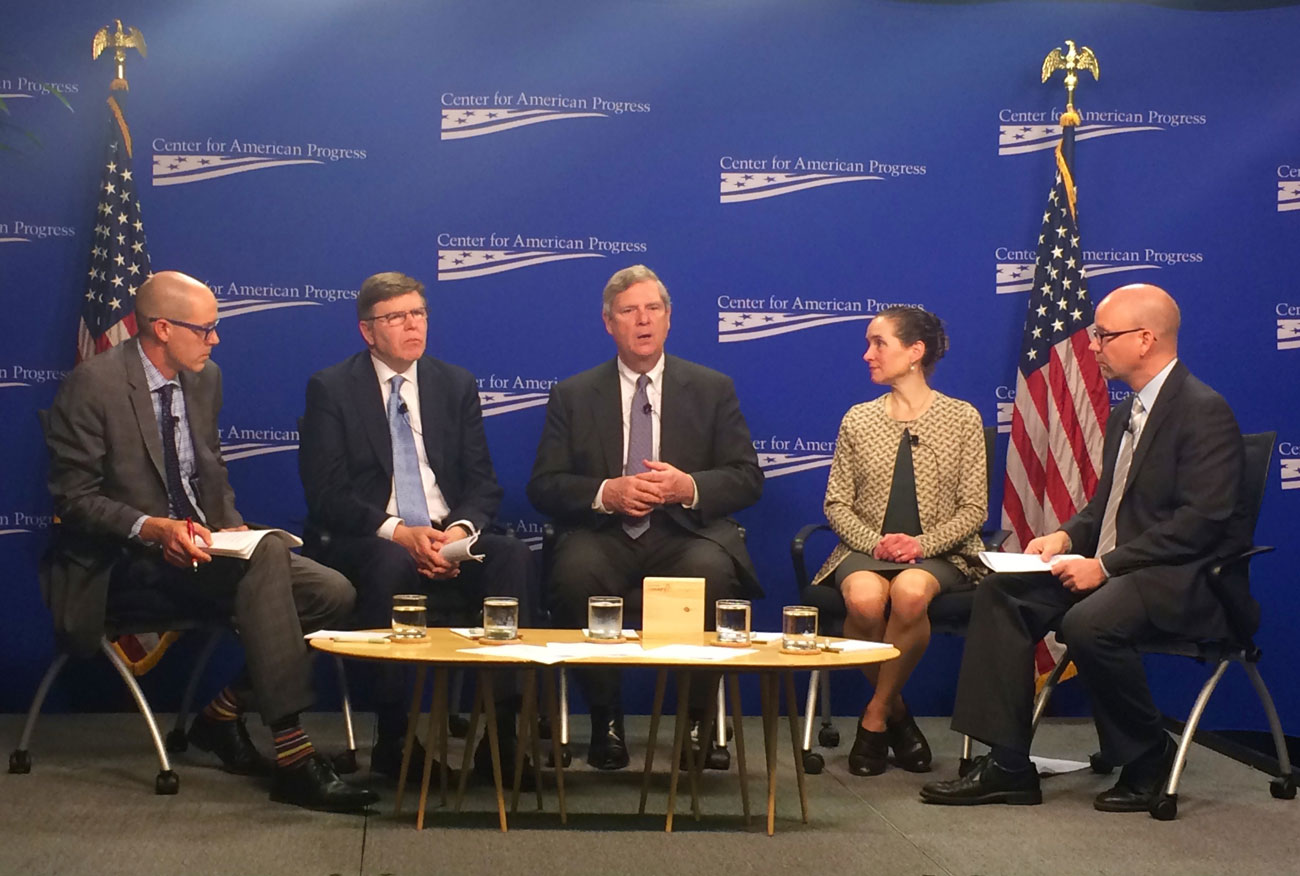WASHINGTON – The way to bring corporate agriculture in line with sustainable practices may be through America’s stomach.
If healthful “fast-casual” dining keeps growing, experts say, more widespread shifts toward sustainability and fresh or minimally processed produce and meat are likely to follow.
“The industry really is built to serve the consumer marketplace,” says Christopher Policinski, president and CEO of Land O’ Lakes Inc. “So when consumers want things, the industry will pivot to serve them.”
Fast-casual restaurants fall somewhere between fast food and casual full-service dining. They are quick and easy options for consumers but offer higher-quality food products, which is reflected in their prices. The sector has taken off in the U.S., with Chipotle Mexican Grill and Panera Bread among the power players. But a range of smaller chains like Sweetgreen and Chop’t also are gaining ground.
Meanwhile, sustainable production – which involves farming practices that are environmentally friendly – fresh ingredients, and antibiotic-free meats are increasingly being linked with fast-casual restaurants and driving their popularity.
Fast-casual concepts, natural ingredients and minimally processed food, and environmental sustainability all topped the list of biggest food trends forecast for 2016, according to a survey of nearly 1,600 chefs by the National Restaurant Association, an influential trade group. Another report by the organization revealed that 90 percent of fast-casual restaurant operators say their customers pay more attention to food sourcing and production than they did two years ago.
Some fast-casual chains are building a culture even beyond food. Sweetgreen, launched on the East Coast, throws a yearly music festival, with the proceeds going to the chain’s nutrition education programs. Tender Greens, a West Coast chain, runs an internship program that introduces youth who have been in foster care to sustainable, healthy food production and provides opportunities for jobs with the company.
The hybrid sector’s popularity is giving consumers a platform to demand healthy products on an unprecedented scale, though compared with the traditional quick-service food industry, fast-casual is still a new market with a relatively small influence on big agriculture.
Yet while large-scale farmers may not yet feel the full heat, even fast-food originals appear to be responding to the burgeoning eateries. Heavyweight McDonald’s, for example, has taken steps of late to stay competitive and appeal to a more health-conscious consumer base.
Last year, the Golden Arches switched from using margarine to butter on its English muffins, biscuits and bagels, and also recently started testing the use of fresh beef patties instead of frozen ones at multiple locations in the Dallas area.
Even small changes like these, when made by an industry giant with more than 14,000 stores in the U.S., hold the potential to make a substantial impact on suppliers.
“McDonald’s is a very big company and has significant influence over its supply community, so changes they make (and they have been making changes) can ripple greatly across the system,” Chipotle spokesman Chris Arnold says in an email.
Chipotle, for its part, now has over 2,000 locations and plans to open over 200 more this year, according to its first-quarter report for 2016. Last year, it stopped serving pork in many restaurants after discovering a supplier violated its animal welfare standards, which include raising livestock in larger spaces and the limited use of antibiotics. In industrial farming, chickens and pigs are often raised in overcrowded pens or cages and often never see the light of day.
The pork shortage, which began in early 2015, dragged on until late in the year while Chipotle struggled to find a new supply that would meet its standards and volume needs. But Arnold says there has been some movement in pork production away from antibiotic use and gestation pens – cramped, individual crates used to hold pregnant sows.
“These are important steps, and they underscore the fact that consumers increasingly want meat that is raised in better ways,” Arnold says. “As long as the demand is there, I think you’ll see continued movement within the large ag sector to fill this demand.”
In Washington, U.S. Agriculture Secretary Tom Vilsack also said some desired changes in farming practices are happening already.
“We’re beginning to see a lot more investment in new technologies on the farm that will increase the production of cage-free eggs because the market is saying that’s what we want,” Vilsack said during a panel discussion at think tank the Center for American Progress.
Reforming big agriculture additionally is key to America’s commitment to address climate change, says Suzy Friedman, director of agricultural sustainability at the Environmental Defense Fund.
“Too often I think the dialogue is, ‘OK, if you’re big you can’t be sustainable,'” she explained during the panel discussion. “The reality is if big can’t be sustainable – whether it’s in terms of a big company or a larger farm or a larger landscape – then we’re never going to get to the point that we need to be if we’re going to be climate smart.”
And changes motivated by market demand are more effective than legal mandates, says Paul Schlegel, director of environment and energy policy at the American Farm Bureau Federation, which represents farmers and ranchers.
Regulation can leave farmers with stranded investments, he says, whereas market demand incentivizes them to adapt and eases transition costs.
“Then the system reflects the needs of everybody, and that works better,” Schlegel says.
As long as current consumer trends continue, the market will continue to bring about change.
“The more people want better food – whether from restaurant companies, supermarkets or local farms in their communities – the more the system will shift to provide that,” Chipotle’s Arnold says.


